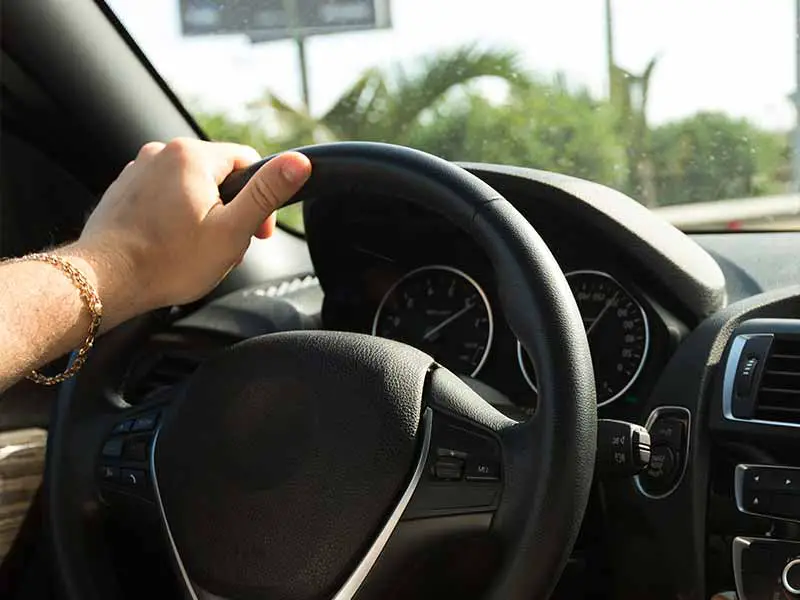Did you know that the lifespan and performance of your brand-new tires can drastically change based on whether you have misaligned wheels? You might be spending more money than you need to, and potentially compromising your safety on the road, if you’re overlooking this crucial step.
When You Get New Tires, Do You Need An Alignment?
When you get new tires, you don’t always need an alignment. However, it’s often recommended to ensure optimal tire wear and vehicle performance.
If you’ve experienced symptoms of poor tire alignment or haven’t had one performed within the last 10,000 miles you will definitely want to have an alignment done.
In this article, we’ll dive deep into the relationship between new tires and wheel alignment, explore common scenarios you might encounter, break down the costs associated with alignment, and highlight the myriad benefits of ensuring your tires are properly aligned.
Let’s take a closer look.
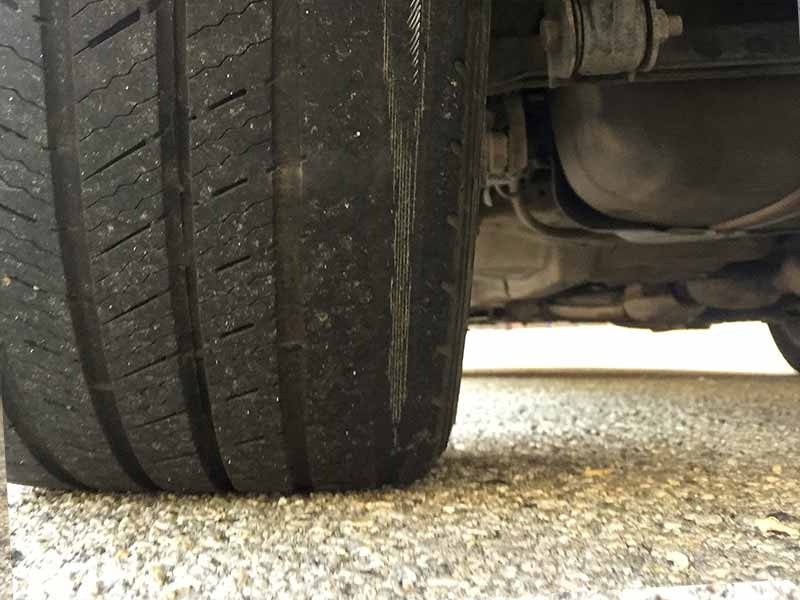
How to Know If You Need an Alignment
Ensuring your vehicle’s wheels are properly aligned is crucial for safety, tire lifespan, and overall performance. But how can you tell when it’s time for an alignment check? Here are some tell-tale signs and symptoms to watch out for:
Steering Wheel Misalignment
- Off-Center Steering Wheel: When driving straight, if your steering wheel isn’t centered or it’s tilted to one side, it might be a sign of alignment issues.
- Steering Wheel Vibration: A vibrating steering wheel can indicate misaligned tires or even issues with tire balance.
Vehicle Pulling to One Side
- Consistent Pulling: If your vehicle consistently drifts or pulls to one side when you’re driving on a straight and level road, it’s a classic sign that you may need an alignment.
- Occasional Pulling: Sometimes, the pull might not be consistent but can be felt when braking or accelerating. This can also indicate potential alignment problems.
Uneven Tire Wear
- Visual Inspection: Regularly inspect your tires. If you notice that one side of a tire wears out faster than the other, or if the front and rear tires show different wear patterns, misalignment could be the culprit.
- Tire Noise: Uneven tire wear due to misalignment can cause increased road noise when driving, especially at higher speeds.
Poor Handling
- Delayed Steering Response: If your vehicle feels sluggish or delayed in its response to steering inputs, it could be due to misalignment.
- Reduced Cornering Ability: Misaligned tires might not grip the road properly, especially in turns, leading to a feeling of instability or reduced cornering performance.
Recent Incidents or Changes
- Accidents & Bumps: Even a minor fender bender or a significant bump against a curb can knock your wheels out of alignment. If you’ve had a recent incident, it’s wise to check the alignment.
- Suspension Repairs: If you’ve had any suspension parts replaced or repaired, an alignment check should follow to ensure everything is in sync.
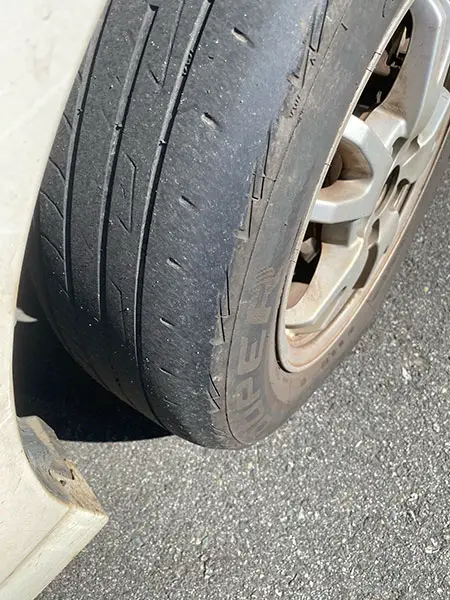
Cost Considerations: Alignment and Tire Wear
Understanding the costs involved with tire alignment and potential savings from preventing excessive tire wear is crucial for vehicle owners. Investing in proper wheel alignment can save you money in the long run.
The Average Cost of Tire Alignment
- Two-Wheel Alignment: Often referred to as a “front-end alignment,” it involves only the front wheels. This can range between $50 to $75, but prices can vary based on location and service provider.
- Four-Wheel Alignment: This is a comprehensive alignment that includes all four wheels. Typically, it can range from $100 to $150. For vehicles with advanced systems like traction control and anti-lock brakes, it might be slightly higher.
Factors Affecting Alignment Cost
- Vehicle Make and Model: Luxury vehicles or those with sophisticated suspension systems might have a higher cost.
- Regional Differences: Labor rates and overheads can vary by region, affecting the overall cost.
- Additional Services: Some places might offer packages that include tire rotation, balance, and alignment. While these might have a higher upfront cost, they can offer value in terms of comprehensive service.
Potential Savings from Proper Alignment
- Tire Lifespan: Regularly aligned tires can last longer, delaying the need for replacements. If an average set of tires costs $400 and lasts 60,000 miles instead of 40,000 miles due to proper alignment, that’s a significant saving.
- Fuel Efficiency: A vehicle with well-aligned tires can save on fuel. Even a 1% increase in fuel efficiency can lead to savings in the long run.
- Avoided Repairs: Misalignment can lead to damage in suspension and steering components. Regular alignments can help spot and fix these issues before they become more significant and costly.
The Price of Neglect
- Premature Tire Replacement: If tires wear out unevenly due to misalignment, they might need replacement sooner, leading to added costs.
- Decreased Safety: Worn-out tires can compromise grip, especially in wet conditions, leading to potential accidents.
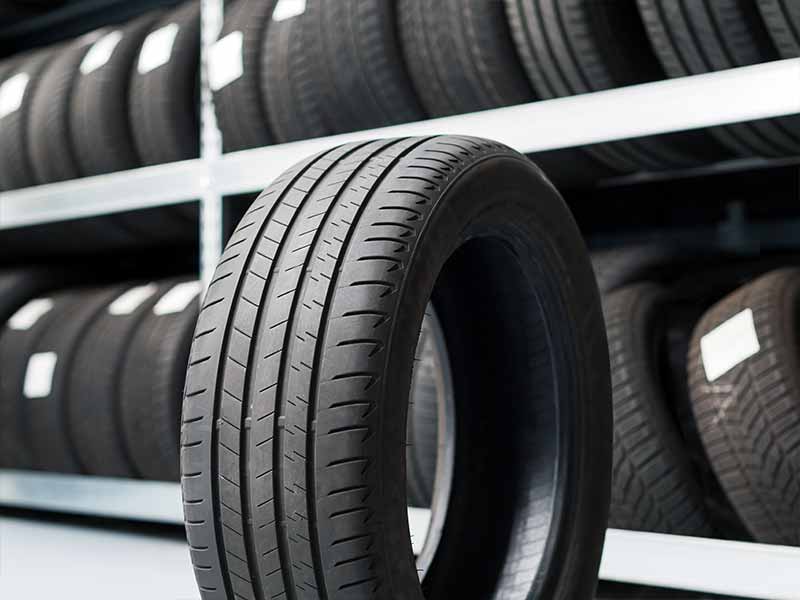
Scenarios of Replacing Tires and Alignment
Different situations call for varied approaches when it comes to tire replacement and alignment. Let’s examine some common scenarios to determine the best steps to take.
Replacing Only 2 Tires
- What to consider: If you’re only replacing two tires (often due to uneven wear or damage to one axle), the new tires should typically go on the rear axle to prevent oversteer scenarios in wet conditions.
- Alignment implications:
- When you replace only 2 tires, alignment checks become important. Even if the old tires showed no obvious signs of misalignment, the dynamics with the new tires might be different.
- It’s also a good opportunity to check if misalignment was the cause of uneven wear in the first place.
New Tires First or Alignment First?
- Sequential Importance: Ideally, you’d want to get the new tires on first and then perform the alignment. This ensures that the alignment technicians are working with the tires that will be on the vehicle moving forward.
- Exceptions: If your vehicle shows severe signs of misalignment, it might be wise to correct the alignment before putting on brand-new tires to prevent immediate uneven wear.
Timing of Alignment After New Tires
- Immediate alignment: It’s best to align immediately after getting new tires. This ensures they start their lifespan in the best possible condition.
- Delayed Alignment: If you can’t align immediately, try not to delay it too long. It’s preferable to get the alignment checked within the first week of having new tires. The longer you wait, the more you risk uneven wear.
Partial vs. Complete Tire Replacement
- Four Tires at Once: If you’re replacing all four tires, it’s a golden opportunity to ensure everything is squared away with an alignment. This provides a fresh start for your entire tire and wheel assembly.
- Staggered Replacements: If you’re doing staggered replacements (like two tires now and two tires later), it’s even more crucial to keep an eye on alignment to ensure all tires wear at a consistent rate.
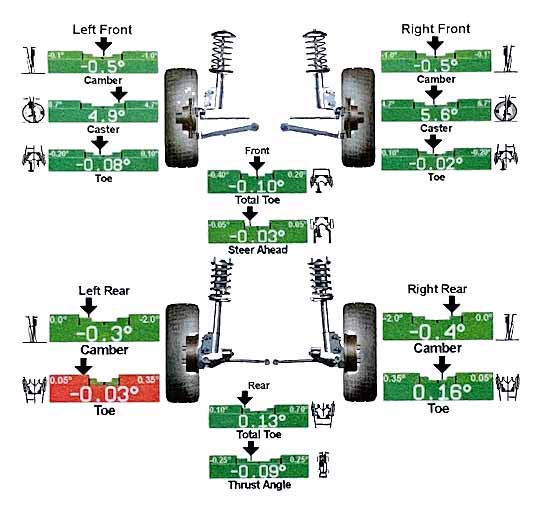
Importance of Wheel Alignment With New Tires
When you invest in new tires, it’s essential to ensure that they are aligned properly. Proper wheel alignment is a critical step that many might overlook, but it has significant benefits and implications for your vehicle’s performance and tire lifespan.
Maximizing Your Tire Investment
- Prolonged Tire Life: Misalignment can lead to premature wear. Proper alignment ensures even wear, allowing your tires to last longer.
- Optimal Performance: New tires are an investment in safety and performance. Aligning them ensures that they provide the best possible grip and handling.
Ensuring Safety on the Road
- Better Handling: Aligned tires respond better to steering. Whether it’s a sharp turn or a sudden stop, you want your vehicle to react as expected.
- Preventing Drift: If tires are not aligned, the car might drift or pull to one side, which can be particularly dangerous at high speeds or in wet conditions.
Saving Money in the Long Run
- Fewer Replacements: Tires that wear out unevenly due to misalignment will need to be replaced sooner. Proper alignment extends the intervals between replacements.
- Improved Fuel Efficiency: Poorly aligned tires create unnecessary road resistance, meaning the engine has to work harder. Proper alignment can improve your miles per gallon, saving you money at the pump.
Resources
Below are some links you may find helpful when learning about tires
- Do I need an alignment with new tires? – Firestone
- Do you really need an alignment after getting new tires installed? – Motor Biscuit
Final Thoughts
In the world of automotive care, the importance of wheel alignment often goes underappreciated. Yet, as we’ve explored, ensuring your vehicle’s wheels are properly aligned has a direct impact on tire lifespan, driving safety, performance, and even your wallet.
From the tell-tale signs like an off-center steering wheel or uneven tire wear to the benefits of increased fuel efficiency and a smoother ride, it’s evident that alignment is a crucial aspect of vehicle maintenance. As you invest in new tires, consider the alignment as a complementary service — it’s a small step that can lead to prolonged tire life, enhanced safety, and an overall improved driving experience.
Good luck and happy motoring.
